 Your new post is loading...
 Your new post is loading...
French robotics startup Exotec has raised $90 million in a round of funding led by London-based VC firm 83North. Founded out of Lille in 2015, Exotec develops autonomous industrial robots called Skypods that can move horizontally and vertically, and travel at speeds of up to 9mph. The robots constitute part of a “goods-to-person” picking system designed to improve productivity and reduce strain and physical exertion in human warehouse workers. Ecommerce has boomed in 2020 due in large part to COVID-19, with online merchants seeing a 42% year-on-year increase in sales last month in the U.S. alone — data suggests that the global pandemic has led to an extra $107 billion in online sales since March. This surge in demand is good news for companies such as Exotec, which specialize in equipping large warehouses with the tools to pick and pack orders at scale. The Skypod system comprises four core components. The battery-powered robots use laser scanners to detect obstacles, and can move horizontally along the ground and vertically, enabling them to reach goods stored high up. The storage racks themselves are also part of Exotec’s system, designed to house inventory at up to 32 feet high.
Huawei Technologies will begin selling smartphones capable of running its self-designed operating system next year, as it seeks to keep its consumer business going without Google Android and other U.S. suppliers.
Exotrail défie la gravité et s'affirme comme un leader français et européen du #NewSpace
A DANE, A Swede, a German and a Dutchman walk into a bar. It is 1979 and spooks from the four countries are conferring in Munich over dark and malty lagers. For years, they had co-operated in the business of signals intelligence, or SIGINT—intercepting messages and cracking codes—and wanted a name for their budding spy pact. “They looked at their glasses, filled with Doppelbock beer of the local brand Maximator,” writes Bart Jacobs, a Dutch computer-science professor, “and reached a decision”. In a paper published last month, Mr Jacobs publicly revealed the existence of the Maximator alliance for the first time, to the considerable irritation of those who had kept it under wraps for decades. The group was formed in 1976, when Denmark joined forces with Germany and Sweden to intercept and decipher messages sent by satellites, a burgeoning method of communication. The Netherlands joined two years later, bringing its intercept stations in the Carribean to the table, and France in 1985. The group is alive and well today. Maximator’s history is a fine illustration of the layers of chicanery involved in good cryptology. As well as plucking signals out of the ether, the group would swap details of weaknesses in cipher machines which encrypted diplomatic and military messages. Luckily for them, says Mr Jacobs, the companies that made those machines “were mostly controlled by Western intelligence organisations.” Crypto AG, a Swiss firm that dominated the global market, turns out to have been jointly owned by the CIA and its German counterpart, the BND. They would sell rigged machines to friends and enemies alike, including several NATO countries.
Vivo has started teasing its next flagship phone, the X50. A video posted to Weibo shows off the camera module, which includes a periscope telephoto, two normal-looking lenses, and one much larger module that is presumably for the primary camera. The lens rotates as the module is manipulated by a robotic gimbal, suggesting the key feature here is image stabilization. One of the big inclusions in Vivo’s Apex 2020 concept phone, which we weren’t able to see in person due to the COVID-19 pandemic, was “gimbal-like” stabilization on a 48-megapixel camera. Vivo said the design was inspired by chameleons’ eyes and is 200 percent more effective than typical OIS, allowing for longer nighttime exposures and smoother video. It looks like the X50 will be the first commercial deployment of this idea; another teaser videotouts the camera’s low-light ability.
Two key Pixel execs, including the computer researcher who led the team that developed the computational photography powering the Pixel’s camera, have left Google in recent months, according to a new report from The Information. The executives who left are distinguished engineer Marc Levoy and former Pixel general manager Mario Queiroz. Queiroz had apparently already moved off the Pixel team two months before the launch of the Pixel 4 into a role that reported directly to Google CEO Sundar Pichai. However, he left in January to join Palo Alto Networks, according to The Information and his LinkedIn. Levoy left Google in March, which is also reflected on his LinkedIn.
In brief - Telegram has abandoned TON
- The SEC delayed the launch of TON and Telegram had to give investors their money back.
- It won’t support third-party efforts.
Telegram, the operator of the 400 million-strong messenger app, today announced that it has given up on its upcoming blockchain network, the Telegram Open Network, following a lengthy, protracted dispute with the SEC. "Today is a sad day for us here at Telegram. We are announcing the discontinuation of our blockchain project.” wrote Pavel Durov, co-founder of Telegram, in a blog post. “Telegram’s active involvement with TON is over.” Since October, the SEC has alleged that Telegram’s $1.7 billion ICO in 2018 for the cryptocurrency that powers the network, Grams, constituted an illegal securities offering. Though Telegram denied the charges, the SEC secured one temporary injunction after another, delaying the launch of the network. Due to a clause in the purchasing agreement for Grams, Telegram promised it would return the tokens if the network didn’t launch by April 30. The network didn’t launch, so Telegram offered to return investors their money. The project folded less than two weeks later.
“The announcement came totally out of the blue and I am very proud to accept the Turing Award,” said Hanrahan, who is the Canon Professor in the School of Engineering and a professor of computer science and of electrical engineering at Stanford University. “It is a great honor, but I must give credit to a generation of computer graphics researchers and practitioners whose work and ideas influenced me over the years.” Hanrahan splits the award and its $1 million prize with one-time mentor and colleague Edward “Ed” Catmull, former president of Pixar and Disney Animation Studios. The pair’s recognition marks only the second time that the award has been given for computer graphics. “All of us at Stanford are tremendously proud of Pat and his accomplishments, and I am delighted that he and his colleague Ed Catmull are being recognized with the prestigious Turing Award,” said Stanford President Marc Tessier-Lavigne. “Pat has made pioneering contributions to the field of computer graphics. His work has had a profound impact on filmmaking and has created new artistic possibilities in film, video games, virtual reality and more.” In the late-1980s, Hanrahan was chief architect at Pixar under Catmull, where he was principally responsible for creating the now-famous RenderMan Interface, the 3D animation application used to make such beloved films as Toy Story, Finding Nemo, Cars and many more. RenderMan is still widely used today. Hanrahan is particularly proud of his work on RenderMan’s Shading Language, which brought dramatic, photorealistic lighting to computer animation for the first time. He has won three Academy Awards for technical achievement. “Pat Hanrahan’s work is an extraordinary example of the kind of creative research for which Stanford Engineering is known,” said Jennifer Widom, dean of the Stanford School of Engineering and a colleague of Hanrahan’s in the departments of computer science and of electrical engineering. “His work on computer graphics and data visualization have transformed industries and fields, and I am thrilled he is receiving this recognition, which he so richly deserves.” In a statement, ACM said Hanrahan and Catmull “fundamentally influenced the field of computer graphics through conceptual innovation and contributions to both software and hardware. Their work has had a revolutionary impact on filmmaking, leading to a new genre of entirely computer-animated feature films.”
Il a fallu 4 ans à l'Autorité de la concurrence pour condamner le Cartel des titres-restaurant, saisie par la startup RESTO FLASH : La French Tech est aussi une histoire de résilience ! Cet exemple illustre parfaitement les pratiques - dignes du siècle dernier - d'un secteur qui embrasse sa transformation digitale par le refus et le déni, et le rôle clé du régulateur qui protège et encourage les plus agiles et les plus fragiles. Pourtant, investir une fraction de cette somme dans l'entreprise, aux côtés de Pierre Kosciusko-Morizet ou Olivier Mathiot, aurait permis à l'un de ces acteurs de prendre de vitesse tous les autres. Les voici désormais englués dans le passé tandis que plusieurs startups ont emboité le pas à l'équipe d'Emmanuel Rodriguez-Maroto pour révolutionner le marché à la suite de RESTO FLASH.
Tesla has remotely disabled driver assistance features on a used Model S after it was sold to a customer, Jalopnik reports. The company now claims that the owner of the car, who purchased it from a third-party dealer — a dealer who bought it at an auction held by Tesla itself — "did not pay" for the features and therefore is not eligible to use them.
With Graviton2, AWS is making it clear that it is serious about Arm processors in the data center as well as moving cloud infrastructure innovation at its pace. Amazon Web Services launched its Graviton2 processors, which promise up to 40% better performance from comparable x86-based instances for 20% less. Graviton2, based on the Arm architectuare, may have a big impact on cloud workloads, AWS' cost structure, and Arm in the data center. Graviton2 was unveiled at AWS' re:Invent 2019 conference and ZDNet was debriefed by the EC2 team in an exclusive. Unlike the Graviton effort and A1 instances unveiled a year ago, Graviton2 ups the ante for processor makers such as Intel and AMD. With Graviton2, AWS is making it clear that it is serious about Arm processors in the data center as well as moving cloud infrastructure innovation at its pace. "We're going big for our customers and our internal workloads," said Raj Pai, vice president of AWS EC2. AWS is launching new Arm-based versions of Amazon EC2 M, R, and C instance families. Indeed, Graviton2, which is optimized for cloud-native applications, is based on 64-bit Arm Neoverse cores and a custom system on a chip designed by AWS. Graviton2 boasts 2x faster floating-point performance per core for scientific and high-performance workloads, support for up to 64 virtual CPUs, 25Gbps of networking, and 18Gbps of EBS Bandwidth. AWS CEO Andy Jassy said the new Graviton2 instances illustrate the benefits of designing your own chips. "We decided that we were going to design chips to give you more capabilities. While lots of companies have been working with x86 for a long time, we wanted to push the price to performance ratio for you," said Jassy during his keynote. Jassy added that Intel and AMD remain key partners to AWS.
At its re:Invent conference, AWS today announced the launch of its Inferentia chips, which it initially announced last year. These new chips promise to make inferencing, that is, using the machine learning models you pre-trained earlier, significantly faster and cost effective. As AWS CEO Andy Jassy noted, a lot of companies are focusing on custom chips that let you train models (though Google and others would surely disagree there). Inferencing tends to work well on regular CPUs, but custom chips are obviously going to be faster. With Inferentia, AWS offers lower latency and three times the throughput at 40% lower cost per inference compared to a regular G4 instance on EC4. The new Inf1 instances promise up to 2,000 TOPS and feature integrations with TensorFlow, PyTorch and MXNet, as well as the ONNX format for moving models between frameworks. For now, it’s only available in the EC2 compute service, but it will come to AWS’s container services and its SageMaker machine learning service soon, too.
Cerebras Systems' announced its new CS-1 system here at Supercomputing 2019. The company unveiled its Wafer Scale Engine (WSE) at Hot Chips earlier this year, and the chip is almost as impressive as it is unbelievable: The world's largest chip, weighing in at an unbelievable 400,000 cores, 1.2 trillion transistors, 46,225 square millimeters of silicon, and 18 GB of on-chip memory, all in one chip that is as large as an entire wafer. Add in that the chip sucks 15kW of power and features 9 PB/s of memory bandwidth, and you've got a recipe for what is unquestionably the world's fastest AI processor. Developing the chip was an incredibly complex task, but feeding all that compute enough power, not to mention enough cooling capacity, in a system reasonable enough for mass deployments is another matter entirely. Cerebras has pulled off that feat, and today the company unveiled the system and announced that the Argonne National Laboratory has already adopted it. The company also provided us detailed schematics of the internals of the system.
|
Here’s a small piece of news you may have missed while you were trying to rebuild your entire life to fit inside your tiny apartment at the beginning of the COVID crisis: Because of the way that the virus shook up just about everything, Google skipped the release of Chrome version 82. Who cares, you think? Well, users of FTP, or the File Transfer Protocol. During the pandemic, Google delayed its plan to kill FTP, and now that things have settled to some degree, Google recently announced that it is going back for the kill with Chrome version 86, which deprecates the support once again, and will kill it for good in Chrome 88. (Mozilla announced similar plans for Firefox, citing security reasons and the age of the underlying code.) It is one of the oldest protocols the mainstream internet supports—it turns 50 next year—but those mainstream applications are about to leave it behind. Today’s Tedium talks about history of FTP, the networking protocol that has held on longer than pretty much any other. —
- NASA patented an efficient new trajectory for sending smaller robotic spacecraft to the moon.
- The agency says it patents and licenses technologies to ensure they can achieve the "widest distribution" possible.
- The new trajectory may help a planned spacecraft called the Dark Ages Polarimeter Pathfinder reach lunar orbit and repeatedly fly through a "cone of silence" on the far side of the moon.
- That spacecraft could detect signals from the first atoms, stars, galaxies, black holes, dark matter, and more, leading to big discoveries about how the universe evolved.
Autonomous aviation startup Xwing raises $10M to scale its software for pilotless flights (via TechCrunch)
Quoting TechCrunch (impossible to scoop link) https://techcrunch.com/2020/05/20/autonomous-aviation-startup-xwing-raises-10m-to-scale-its-software-for-pilotless-flights/ "Autonomous aviation startup Xwing locked in a $10 million funding round before COVID-19 hit. Now the San Francisco-based startup is using the capital to hire talent and scale the development of its software stack as it aims for commercial operations later this year — pending FAA approvals. The company announced Wednesday its Series A funding round, which was led by R7 Partners, with participation from early-stage VC Alven, Eniac Ventures and Thales Corporate Ventures. Xwing has already hired several key executives with that fresh injection of capital, including Terrafugia’s former co-founder and COO Anna Dietrich, and Ed Lim, a Lockheed Martin and Aurora Flight Sciences veteran who more recently led guidance navigation and control for Uber’s autonomous car division as well as Zipline’s AV delivery drone. Xwing is different from some of the other autonomous aviation startups that have popped up in recent years. The startup isn’t building autonomous helicopters and planes. Instead, it’s focused on the software stack that will enable pilotless flight of small passenger aircraft. Xwing is also aircraft agnostic. The company’s engineers are focused on the key functions of autonomous flight, such as sensing, reasoning and control. The software stack, which is designed to work across different kinds of aircraft, is integrated into existing aerospace systems. That strategy of retrofitting existing aircraft will speed up deployment, while maintaining safety and keeping costs in check, according to founder and CEO Marc Piette. It also is a straighter path toward regulatory approval. “It’s more effective for us to not constrain ourselves to a given vehicle and to develop technology that is considered more of an enabler— from a marketing perspective — than going full stack, Piette said when asked if Xwing would ever try to build an autonomous aircraft from the ground up. Since Xwing’s last funding round — $4 million in summer 2018 — the company has been developing its tech and working with the FAA to receive flight certification for pilotless aircraft. Once approved, the company will seek to commercialize pilotless flights. The startup hasn’t named any commercial partners yet. And Piette hasn’t provided details about its commercial strategy either, although he said to expect more announcements this year. Xwing is already working with Bell for NASA’s Unmanned Aircraft Systems (UAS in the NAS) program, an initiative meant to mature the key remaining technologies that are needed to integrate unmanned aircraft in U.S. airspace. The program plans to hold demonstration flights this summer."
Over the years, Apple has made it prohibitively difficult to install unapproved software on its locked-down devices. But on Saturday, a hacker group called Unc0ver released a tool that will "jailbreak" all versions of iOS from 11 to 13.5. It's been years since a jailbreak has been available for a current version of iOS for more than a few days—making this yet another knock on Apple's faltering security image. Unc0ver says that its jailbreak, which you can install using the longtime jailbreaking platforms AltStore and Cydia (but maybe don't unless you're absolutely sure you know what you're doing), is stable and doesn't drain battery life or prevent use of Apple services like iCloud, Apple Pay, or iMessage. And the group claims that it preserves Apple's user data protections and doesn't undermine iOS' sandbox security, which keeps programs running separately so they can't access data they shouldn't. "This jailbreak basically just adds exceptions to the existing rules," Unc0ver's lead developer, who goes by Pwn20wnd, told WIRED. "It only enables reading new jailbreak files and parts of the file system that contain no user data."
The announcement describes two new Intelligent Vision CMOS chip models, the Sony IMX500 and IMX501. From what I can tell these are the same base chip, except that the 500 is the bare chip product, whilst the 501 is a packaged product. They are both 1/2.3” type chips with 12.3 effective megapixels. It seems clear that the one of the primary markets for the new chip is for security and system cameras. However having AI processes on the chip offers up some exciting new possibilities for future video cameras, particularly those mounted on drones or in action cameras like a GoPro or Insta 360. One prominent ability of the new chip lies in functions such as object or person identification. This could be via tracking such objects, or in fact actually identifying them. Output from the new chip doesn’t have to be in image form either. Metadata can be output so that it can simply send a description of what it sees without the accompanying visual image. This can reduce the data storage requirement by up to 10,000 times. For security or system camera purposes, a camera equipped with the new chip could count the number of people passing by it, or identifying low stock on a shop shelf. It could even be programmed to identify customer behaviour by way of heat maps. For traditional cameras it could make autofocus systems better by being able to much more precisely identifying and tracking subjects. With AI systems like this, it could make autofocus systems more intelligent by identifying areas of a picture that you are likely to be focussing on. For example if you wanted to take a photograph of a flower, the AF system would know to focus on that rather than, say, the tree branch behind it. Facial recognition would also become much faster and more reliable. Autofocus systems today are becoming incredibly good already, but if they were backed up by ultra fast on-chip object identification they could be even better. For 360 cameras, too, the ability to have more reliable object tracking metadata will help with post reframing.
Open Compute Project (OCP), the open source hardware group created by Facebook to share designs for hyperscale hardware to the data center community, has announced that Google has taken a seat on the board. Google first joined the OCP in 2016, and has helped develop OCP technology designs, including the Open Rack standard, designed to deploy high density servers in a smaller footprint. OCP announced at its virtual Summit yesterday, that Google is now an Executive Member, which grants it a seat on the board of directors, to be occupied by Parthasarathy (Partha) Ranganathan. Microsoft's Kushagra Vaid also joins the OCP board.
Qarnot Computing, a French company developing sustainable high performance computing (HPC), has raised a €6 million Series B round from Banque des Territoires, Caisse des Dépôts, Engie Rassembleur d’Énergies, A/O PropTech, and Groupe Casino. A combination of climate tech and cloud computing, Qarnot sells cloud computing capacity to clients. When its computer servers generate heat, …
As the novel coronavirus continues to take a human and economic toll across the world, the lucrative business of tech conferences is not immune. The direct economic loss from the cancellation from nine major tech conferences including Google I/O, Facebook’s F8 event, Mobile World Congress and now SXSW over coronavirus has already surpassed $1 billion, according to estimates the data intelligence company PredictHQ pulled for Recode. That number doesn’t even include what event organizers like Facebook itself would have made from the event. The figure just covers the losses to airlines, hotels, restaurants, and transportation providers that would normally make money from attendees’ purchases. Some $480 million — the biggest loss — came from the cancellation of Mobile World Congress, which was supposed to host more than 100,000 attendees in Barcelona last month. That’s followed by SXSW, an Austin tech, music, and movie conference that had approximately 280,000 attendees last year and whose newly announced cancellation could result in $350 million in direct losses according to PredictHQ. The Game Developers Conference, a 30,000-person event that was scheduled for March but has been postponed, could incur $129 million in losses. Google I/O, a 5,000-person developer conferencehas a direct loss estimate of nearly $20 million. While a number of events, including Facebook F8 and Adobe Summit, will still have an online component, that effort does not stave off the significant economic loss from canceling the physical event.
Exotrail, a French company dedicated to providing innovative on-orbit transportation solutions for the small satellite market have announced today that they have signed a contract with AAC Clyde Space, Europe’s leading nanosatellite solutions specialist. Exotrail will equip them with cutting-edge propulsion solutions for their customer, the global satellite telecommunications leader Eutelsat, for its ELO 3 and ELO 4 spacecrafts. The French company will provide propulsion systems for the two 6U CubeSats which will be manufactured and delivered to orbit by AAC Clyde Space. The Eutelsat mission is a precursor to a potential constellation called ELO (Eutelsat LEO for Objects). The contract is to be delivered before the end of the year, both satellites will be launched in 2021. AAC Clyde Space CEO Luis Gomes said: “We are very much looking forward to working with Exotrail. Their product is a perfect fit for both our needs and our customer’s requirements. Their modular ExoMG™ product has a highly compact and flexible form factor with industry leading performance levels, in particular with respect to thrust levels” David Henri, Co-founder and CEO of Exotrail added: “AAC Clyde Space is an established specialist in advanced nanosatellite spacecraft missions and provides market-leading New Space solutions. We are delighted to be able to assist them for this mission with our ExoMG™ - nano. This underlines the relevance of our solutions for optimising global constellations and our expertise in this growing sector” Exotrail started its propulsion system development with a flight demonstrator project that was designed, built, qualified and delivered in only 10 months. The launch of the flight system demonstrator, initially scheduled to fly in November 2019 on board a PSLV, is now planned in March 2020 (due to launcher delay). And the resulting heritage acquired with this project, along with the expertise and innovation put forward in Exotrail’s product development, has allowed the company to secure its first customers. These customer contracts demonstrate that Exotrail’s strategy is paying off and that the company has moved quickly from vision to reality. A vision to not only provide a propulsion system, but a set of software, hardware and services, to change the way satellites are being launched and operated on orbit. This vision is now translating into revenue and success.
Amazon is using next-generation 5G wireless networks to help businesses download data from the cloud faster. At Amazon Web Services’ annual re:Invent conference on Tuesday, AWS CEO Andy Jassy said the company is introducing a new service, called WaveLength, which puts technology from AWS “at the edge of the 5G network,” or closer to users’ devices. It has the potential to deliver single-digit millisecond latencies to users, according to Amazon. At launch, Amazon is partnering with Verizon to incorporate WaveLength technology into parts of its wireless network. Amazon is also working with other global partners, such as Vodafone, KDDI and SK Telecom. Lower latency is one of the big benefits that’s expected to arrive with 5G networks. This means it doesn’t take as long for devices to communicate with each other. For users, it results in fewer disruptions and shorter lag times when streaming videos, among other applications. 5G has the potential for many business-to-business applications, such as improving connectivity of IoT devices in manufacturing, self-driving, health care and other areas, in addition to consumer applications, such as faster streaming on phones. “The connectivity and the speed is just two things,” Verizon CEO Hans Vestberg said on stage Tuesday at AWS’ re:Invent conference. “We can with 5G now bring the processing out to the edge because we have a virtualized network.” With the partnership, AWS’ compute, storage, database and analytics tools are all “embedded” at the edge of 5G networks, Jassy said in an interview with CNBC’s Jon Fortt that aired Tuesday. “That means now you only go from the device to the metro aggregation site, which is where the 5G tower is, where AWS is embedded there, and you get AWS,” Jassy said. “So it totally changes the response rates and the latency and what you can get done.” Amazon is launching WaveLength at a time when excitement is ramping up around 5G networks. The technology is expected to be used more broadly by device makers, carriers and cable companies in 2020.
The BBC have opened up their insane archive of over 16,000 sound effects, which you can now download in WAV format free of charge. The samples are being released under the RemArc license, meaning they can be used for “personal, educational or research purposes.” BBC The BBC have released their incredible library of bizarre and obscure sound effects, all available for free download. Brimming with unbelievably obscure content from the 1920’s onwards, the archive covers almost the entirety of the BBC’s existence. In the archive, you’ll be able to access such samples as; “South American parrot talking and screeching,” “14 month old baby boy, drinking, saying some words,” and “1966 F.A. Cup Final, half-time whistle.” All samples are tagged and searchable, so you can navigate this bizarre library with ease. If you’re ever going to dive into the infinite world of sound effects than BBC is probably your most authoritative source too. All downloaded in high quality WAV format you will have sound effects coming out of your ears. Even if you aren’t particularly interested in foley or cinema it’s pretty amazing just to have a gander through this amazing collection of sounds and be entertained for days. Check out the full archive here.
You don’t have to think about it: when you speak, your brain sends signals to your lips, tongue, jaw, and larynx, which work together to produce the intended sounds. Now scientists in San Francisco say they’ve tapped these brain signals to create a device capable of spitting out complete phrases, like “Don’t do Charlie’s dirty dishes” and “Critical equipment needs proper maintenance.” The research is a step toward a system that would be able to help severely paralyzed people speak—and, maybe one day, consumer gadgets that let anyone send a text straight from the brain. A team led by neurosurgeon Edward Chang at the University of California, San Francisco, recorded from the brains of five people with epilepsy, who were already undergoing brain surgery, as they spoke from a list of 100 phrases. When Chang’s team subsequently fed the signals to a computer model of the human vocal system, it generated synthesized speech that was about half intelligible. The effort doesn’t pick up on abstract thought, but instead listens for nerves firing as they tell your vocal organs to move. Previously, researchers have used such motor signals from other parts of the brain to control robotic arms. “We are tapping into the parts of the brain that control these movements—we are trying to decode movements, rather than speech directly,” says Chang. In Chang’s experiment, the signals were recorded using a flexible pad of electrodes called an electrocorticography array, or ECoG, that rests on the brain’s surface. To test how well the signals could be used to re-create what the patients had said, the researchers played the synthesized results to people hired on Mechanical Turk, a crowdsourcing site, who tried to transcribe them using a pool of possible words. Those listeners could understand about 50 to 70% of the words, on average. “This is probably the best work being done in BCI [brain-computer interfaces] right now,” says Andrew Schwartz, a researcher on such technologies at the University of Pittsburgh. He says if researchers were to put probes within the brain tissue, not just overlying the brain, the accuracy could be far greater. Previous efforts have sought to reconstruct words or word sounds from brain signals. In January of this year, for example, researchers at Columbia University measured signals in the auditory part of the brain as subjects heard someone else speak the numbers 0 to 9. They were then able to determine what number had been heard. Brain-computer interfaces are not yet advanced enough, nor simple enough, to assist people who are paralyzed, although that an objective of scientists. Last year, another researcher at UCSF began recruiting people with ALS, or Lou Gehrig’s disease, to receive ECoG implants. That study will attempt to synthesize speech, according to a description of the trial, as well as asking patients to control an exoskeleton supporting their arms. Chang says his own system is not being tested in patients. And it remains unclear if it would work for people unable to move their mouth. The UCSF team says that their set-up didn’t work nearly as well when they asked speakers to silently mouth words instead of saying them aloud. Some Silicon Valley companies have said they hope to develop commercial thought-to-text brain readers. One of them, Facebook, says it is funding related research at UCSF “to demonstrate the first silent speech interface capable of typing 100 words per minute,” according to a spokesperson. Facebook didn’t pay for the current study and UCSF declined to described what further research it's doing on behalf of the social media giant. But Facebook says it sees the implanted system is a step towards the type of consumer device it wants to create. “This goal is well aligned with UCSF's mission to develop an implantable communications prosthesis for people who cannot speak – a mission we support. Facebook is not developing products that require implantable devices, but the research at UCSF may inform research into non-invasive technologies,” the company said. Chang says he is “not aware” of any technology able to work from outside the brain, where the signals mix together and become difficult to read. “The study that we did was involving people having neurosurgery. We are really not aware of currently available noninvasive technology that could allow you to do this from outside the head,” he says. “Believe me, if it did exist it would have profound medical applications.”
|



 Your new post is loading...
Your new post is loading...




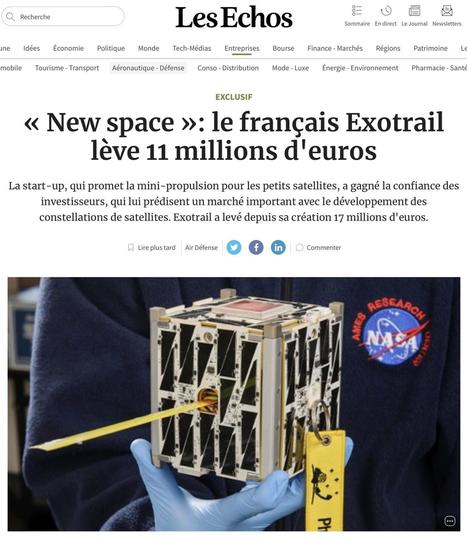





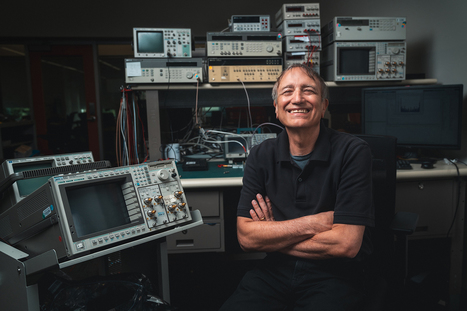



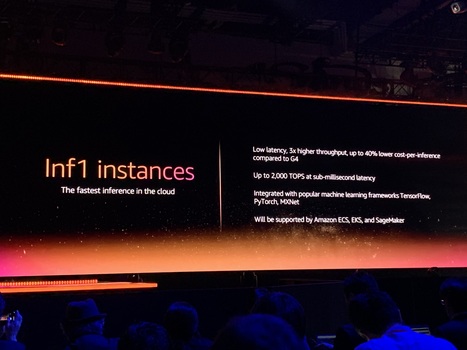
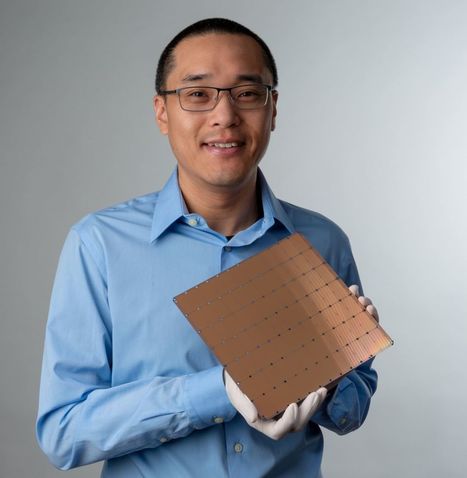


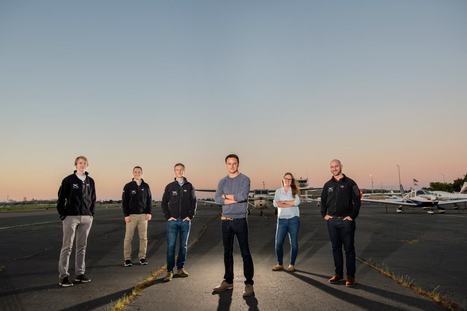



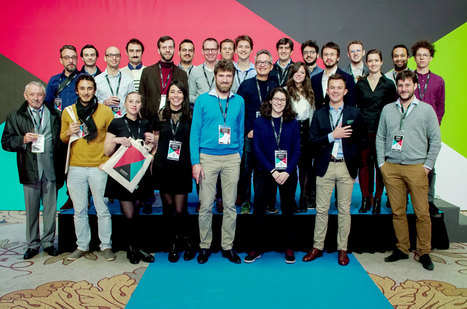











Interestingly, Exotec differentiates from Kiva as it operates in 3D, and is deployed through a system approach.